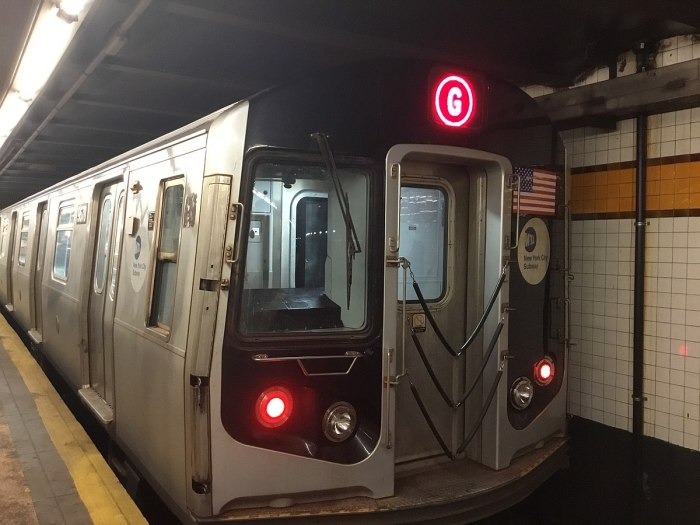The question is at the heart of a project by three New School design students. They have created and begun to distribute stickers to place on MTA subway maps, some of which do not label the island. The stickers are meant to circle the island in red, and point to the land mass: “Rikers Is Here.”
Estefanía Acosta de la Peña, Laura Sánchez, and Misha Volf are distributing the stickers as part of their #SeeRikers campaign, hoping to engage subway riders and change the trajectory of the island being out of sight and mind.
Their efforts come as city politicians begin once again to debate closing the troubled correctional facilities on Rikers Island.
Focusing on Rikers
Separate from the rest of the city, situated in the middle of the East River, Rikers Island lies a few hundred feet from the LaGuardia Airport runways, but many New Yorkers have as little interaction with it as they do the air traffic control tower at LaGuardia.
For those who know Rikers well — including inmates and corrections officers — the island is overcrowded and dangerous, a place rife with prisoner abuse, inmate violence and terrible living conditions.
The complex is a backdrop for thousands of disturbing stories, including that of Kalief Browder, the 22-year-old who spent three years held at Rikers without trial, largely in solitary confinement. He later killed himself.
The majority of Rikers occupants, like Browder, are awaiting trial — not convicted of anything. So the island houses those charged with serious crimes, but also small-time drug dealers and shoplifters who, given the focuses of policing strategy in New York City, more often come from the South Bronx and East New York than Brooklyn Heights or Murray Hill. Many lightly policed neighborhoods have little connection with the jail.
There is a certain obvious consequence, unintended or not, from the island being unnamed on the most iconic map of the city. The subway map is supposed to show, at a glance, how to get from one part of the city to another via mass transit. Lack of a label — and subway — hides the main way to get to Rikers: a ride on the Q100 Limited.
The Rikers label has moved on and off the subway map over the years, as documented by the history blog Untapped Cities.
The island is labeled on the MTA’s online and station maps. But it’s missing on the maps hanging in subway cars — the places that riders check most. Thos maps eliminate “all neighborhood names since there’s no space,” says spokesman Kevin Ortiz.
Ortiz calls the project “vandalism” and says the stickers will be taken down.
John Tauranac, one of the creators of the 1979 map that is used as the basis of the modern version, had a more thoughtful reaction. Though his 1979 map included the label, his main current version, which he updates periodically for private sale, does not.
He said that both maps should label Rikers, including the bus lines that bring people to the island, as is the case with LaGuardia. The people who travel those hypothetical dotted lines are often friends and families of those held at Rikers
Looking for alternatives
The intractability of problems at Rikers’ correctional facility — a culture of abuse and violence which has remained largely immune to reform — has led to some traction for the movement to close Rikers.
Reformers say that Rikers’ population can be gradually shrunk until it is small enough to close. The city could then move instead to a decentralized community-based jail system, where jails are not isolated from the city, its courts, and general oversight. This plan, supported by City Council Speaker Melissa Mark-Viverito and other city officials, although notably not Mayor Bill de Blasio, would make See Rikers a reality.
The New School designers hope their project can “open up a way to start imagining alternatives,” Sanchez says, closing Rikers included. They are beginning to ramp up their stickering campaign, handing out stickers at an event for Sen. Bernie Sanders on Wednesday and also at a rally for the closure of Rikers planned by Just Leadership USA for Thursday.
Glenn Martin, the founder of Just Leadership, who himself served time at Rikers when he was 16, calls Rikers the “third city” in de Blasio’s tale of two cities.
Placed on a “remote island,” Martin says, it’s not exactly surprising that “people behave like they’re on a remote island.” Its remote location gives the impression that the city doesn’t “value” inmates.
It’s the “forgotten city,” he says.
This is amExpress, the conversation starter for New Yorkers. Subscribe at amny.com/amexpress.

































